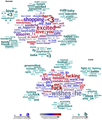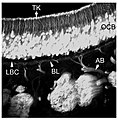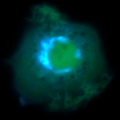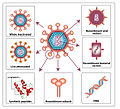GLAM/Newsletter/November 2013/Contents/Open Access report
|
Open Access Button and Berlin 11 conference
10th anniversary of the Berlin Declaration on Open Access

In 2003, the Berlin Declaration on Open Access to Knowledge in the Sciences and Humanities was published, one of the three foundational documents about Open Access to scholarly publications. Since then, annual conferences have been held to discuss progress on the matter, and hundreds of organizations around the globe — including Wikimedia Germany, the Wikimedia Foundation and Wikimedia Poland — have signed the document. For the 10th anniversary, the conference returned to Berlin, where it took place on November 19-20 in the premises of the Berlin-Brandenburgische Akademie der Wissenschaften. A report from keynote speaker Glyn Moody is available here. An evening reception was held in the Bode Museum, with a ceremony during which five GLAMS — Stiftung Jüdisches Museum Berlin, Stiftung Preussische Schlösser und Gärten Berlin-Brandenburg, Bundesarchiv der Bundesrepublik Deutschland, Deutsches Archäologisches Institut, Stiftung Preußischer Kulturbesitz — signed the declaration. The ceremony was followed by a keynote by Haim Gertner, Director of the Archives Division at Yad Vashem, who are also a recent signatory to the declaration and currently exploring ways to collaborate with Wikimedia projects.
The day before the main conference, a satellite event focusing on Open Access and early career researchers took place in Berlin, organized by the Right to Research Coalition and some of its partner organizations. The speakers included Jack Andraka, Heather Joseph, Alek Tarkowski, Bernard Rentier, Cameron Neylon, Mike Taylor and Ulrich Pöschl. One session was dedicated to workshops on topics around practical aspects of Open Access, e.g. on how to signal the openness of references cited on Wikipedia. On of these workshops was dedicated to the Open Access Button, which was officially launched from there. It is a bookmarklet that lets users record paywalls they hit when searching for scholarly literature and that helps them find copies elsewhere (if they exist).
Stats
In early December, GLAMorous reported for the Commons category Open access (publishing) that it had 22,208 files, of which 6,045 are used a total of 66,008 times across 300 Wikimedia projects.
For this category, the latest BaGLAMa stats are available for October and indicate 37,975,326 views of 57,080 mainspace pages that were using materials from the category across 210 Wikimedia projects. Over 50% of these views are due to files that have been featured as Open Access File of the Day, and around 9% due to files uploaded by the Open Access Media Importer.
Open Access Media Importer
The following represents a selection of the ca. 200 files that have been uploaded by the Open Access Media Importer this month, bringing the total to over 14,500. If you can think of wiki pages where these files could be useful, please put them in there or let us know.
Open Access File of the Day
The following files have been featured as Open Access File of the Day this month:
-
November 30: flowers used in RNA interference experiments
-
November 29: the snake Cryptelytrops insularis
-
November 28: the beetle Abacoleptus paradoxus
-
November 26: Gender differences in social network service use
-
November 25: Monthly mean and minimum outdoor and indoor temperatures throughout Africa
-
November 24: A love dart of the snail Marmorana scabriuscula.
-
November 23: plan of the organization Stratospheric Particle Injection for Climate Engineering
-
November 22: The spider Mysmena wawuensis.
-
November 21: the skink Brachymeles bonitae
-
November 20: ceramic vessels from Chiapa de Corzo
-
November 19: Haplochromis vonlinnei
-
November 18: slug of family Veronicellidae
-
November 17: Experimental chamber for studying chemotaxis in response to laminar flow
-
November 16: Spawning behaviour of the cichlid fish Lamprologus callipterus.
-
November 15: an eye after treatment for Thygeson's superficial punctate keratopathy
-
November 14: vertebrae of phosphatodraco, a dinosaur
-
November 13: endomyocardial biopsy specimen
-
November 12: A male Brookesia micra chameleon.
-
November 11: The moth Schrankia taenialis.
-
November 10: call of the male frog Pseudhymenochirus merlini
-
November 9: Green fluorescent protein expressed in ciliated olfactory sensory neurons.
-
November 8: Larsenianthus wardianus.
-
November 7: The beetle Abacoleptus curtus.
-
November 6: The snail Pomacea insularum.
-
November 5: Loboscelidiinae, a wasp
-
November 4: the ghost lineage of the ichthyosaur
-
November 3: the moth Baniana gobar
-
November 1: approaches for HIV vaccine development


























